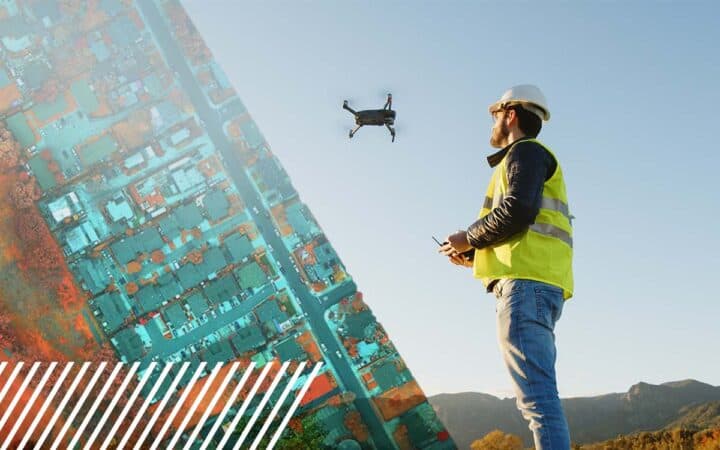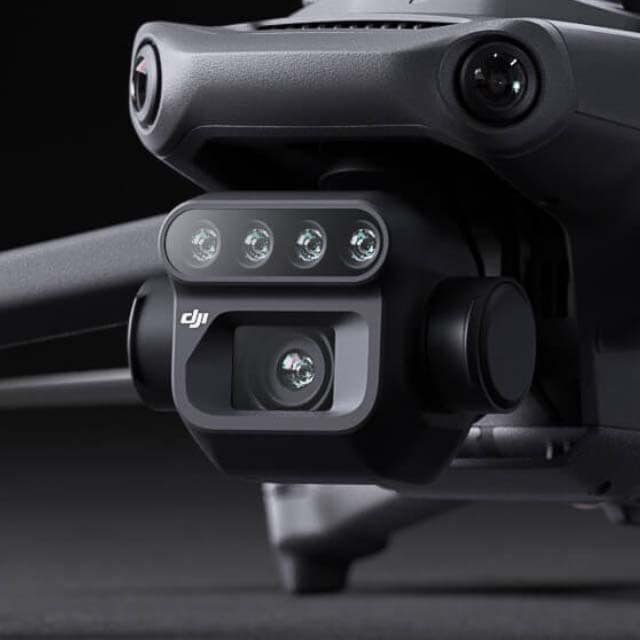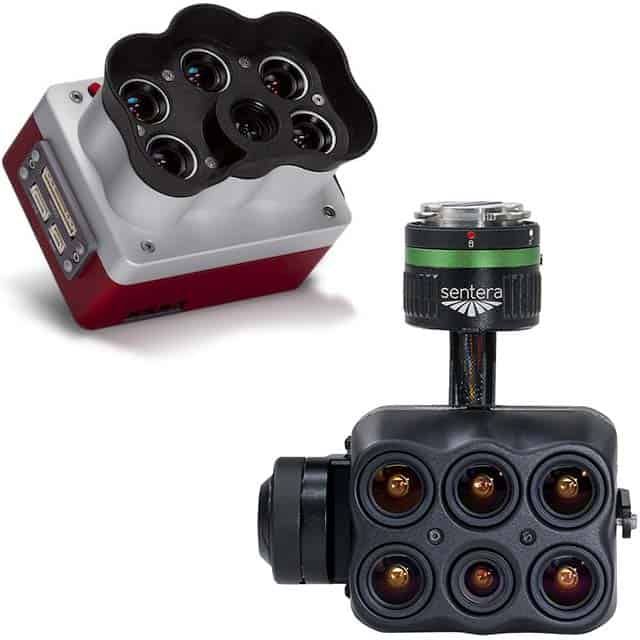
Choosing the Right Multispectral Sensor: Insights from FlyGuys Expert Jerimiah Contreras
For drone pilots looking to step into or advance their skills in multispectral missions, choosing the right sensor is crucial. Multispectral imaging is particularly vital during the agricultural season, offering invaluable data for crop health analysis, resource efficiency, and yield prediction. Here we will read insights from our FlyGuys drone pilot expert and Manager of Pilot Experience, Jerimiah Contreras, who explores popular multispectral sensors such as the Mavic 3 Multispectral, MicaSense, and Sentera, providing practical guidance for drone pilots.
Comparison of Multispectral Sensors
Overview
- Mavic 3 Multispectral: A compact, ready-to-fly drone with an integrated 4-band multispectral camera. Ideal for ease of use and general agricultural tasks.
- MicaSense and Sentera: High-performance multispectral sensors designed for integration with various drones, offering advanced features for detailed analysis and research.
Key Features
- Mavic 3 Multispectral: Equipped with RGB, Red Edge, NIR, and Green bands, and an onboard RTK system for enhanced global map accuracy. Perfect for precision agriculture.
- MicaSense and Sentera: Offer 5+ multispectral bands, enabling detailed vegetation health analysis, soil condition monitoring, and nutrient deficiency detection. These sensors require expertise in flight parameters and setup.
Applications
- Mavic 3 Multispectral: Ideal for basic crop health monitoring by detecting stress or disease in plants.
- MicaSense and Sentera: Designed for advanced studies, with greater flexibility to analyze subtle variations in plant and soil health.
Advantages
- Mavic 3 Multispectral: All-in-one solution with RTK capabilities. Cost-effective and user-friendly for small-to-medium scale tasks.
- MicaSense and Sentera: Higher radiometric accuracy and customization options, suitable for large-scale agricultural mapping and research.
Limitations
- Mavic 3 Multispectral: Fixed 4-band sensor limits complex analyses.
- MicaSense and Sentera: Require more setup, expertise, and investment, making them better suited for advanced applications.
Selecting the Best Sensor Based on Application, Budget, and Drone Compatibility.
Mavic 3 Multispectral
The Mavic 3 Multispectral is an all-in-one, integrated drone with a built-in multispectral camera. It is a great choice for those seeking ease of use and convenience, as it is fully compatible with the DJI ecosystem. Although it only provides four bands, it is still a great solution for general crop health management. If you have a limited budget, this drone is cost-effective and offers good value at around a $5,000 price point.
- Cost: Approximately $5,000.
- Best For: Pilots seeking an integrated, easy-to-use system for general crop health management.
- Compatibility: Fully integrated with DJI’s ecosystem.

MicaSense & Sentera Sensors
Micasense and Sentera sensors can be integrated with a number of drones and fixed wings. Although these sensors do lack convenience and ease of use, they allow pilots to utilize different platforms for different types of operations. These two sensors are suitable options for advanced research, large-scale agricultural mapping, or scientific studies. They tend to be more expensive, ranging from around $7k – $10k for just the sensor. You can expect to be in the $25k – $40k range after including the cost of a drone or fixed wing.
- Cost: $7,000 – $10,000 for the sensor; $25,000 – $40,000 with compatible drones.
- Best For: Advanced research, large-scale mapping, and scientific studies.
- Compatibility: Can be integrated with various drones and fixed-wing platforms.

Practical Tips for Multispectral Missions
- Use Calibration Panels. It’s important to always utilize a reflectance panel when capturing multispectral data. The panels provide known reflectance values across various wavelengths, helping to calibrate the sensor and ensure the measurements are accurate. A calibration panel is especially useful for correcting variations caused by lighting conditions, atmospheric interference, or sensor inconsistencies.
- Incorporate Downwelling Light Sensors. If you are collecting data with a Micasense or Sentera sensor, it is important to always use a “downwelling light sensor” or “incident light sensor.” This ensures that variations in lighting conditions (e.g., cloud cover and time of day) do not distort the interpretation of the collected data.
- Optimal Times for Data Collection. It is crucial to capture multispectral imagery at optimal times to obtain high-quality and reliable data. Here are tips for optimal flight times:
- Do fly in the morning to early afternoon to minimize shadows.
- Do fly in clear skies, which is ideal for capturing consistent light without interference.
- Do fly in overcast skies, which diffuses light and reduces shadows.
- Don’t fly in hazy, dusty, or smoky conditions, as these can distort light transmission.
- Understand Indices. Some of the most common indices are NDVI and NDRE, which are often used to determine plant health. Many different indices can be used with multispectral data, and it’s important to understand their different uses. Read more about NDVI here.
- Don’t Overlook RGB Drones. While RGB drones lack the spectral specificity of multispectral systems, they can still offer valuable insights into crop health, field conditions, and operational efficiency. We work with several clients who utilize RGB data for crop inspection, irrigation monitoring, plant count, and more.
Benefits of Leveraging Multispectral Data
Leveraging multispectral data offers businesses a wide array of benefits in agriculture, enabling more informed decision-making, enhanced productivity, and long-term sustainability. Multispectral imaging provides insights that go beyond human vision by capturing light in specific spectral bands, such as visible, near-infrared (NIR), and short-wave infrared (SWIR), making it an invaluable tool across industries.
- Early Stress Detection: Identify pest infestations, nutrient deficiencies, or diseases before they become visible.
- Optimized Resource Use: Reduce costs and environmental impact by targeting irrigation, fertilizer, and pesticide application to specific areas.
- Improved Harvest Planning: Accurately forecast crop growth stages and yields for better planning and market insights.
Grow Your Multispectral Career with FlyGuys
Choosing the right multispectral sensor comes down to understanding your mission’s complexity, budget, and drone compatibility. Whether you opt for the integrated ease of the Mavic 3 Multispectral or the advanced capabilities of MicaSense and Sentera, multispectral data can revolutionize agricultural operations. Join our drone pilot network to grow your multispectral career today.